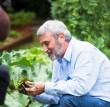Connemara Ponies
BREED: Connemara Ponies
TEMPERAMENT: Quiet, sturdy
COST: $850 plus
LIFESPAN: 25 years
RECOMMENDED FOR: Families
History
Connemara Ponies originated in Ireland from the mountain and moorland area of Connemara, in the north western region of County Galway, on the west coast. It is believed the breed descended from the Celtic pony, but has also had infusions of Andalusian and Clydesdale blood. More recently Arab stock has been introduced to add quality and refinement and when bred with a Thoroughbred produces a larger, finer boned, all round riding horse. The first Connemara arrived in Australia in 1963 and was the grey stallion Island King and was followed in 1965 by the mare Arden and her filly foal.
Appearance
Connemaras are robust, solid and sturdy ponies which are sure-footed and agile to ride. The back of a Connemara Pony is straight, the quarters well developed and they have good hard feet. Connemara Ponies are predominantly grey but also come in black, bay, chestnut, roan and palomino. They range in height between 13-15 hands.
Temperament
Connemaras are manageable, quiet, kind and responsive, possessing good sense and basic intelligence.
Health and lifespan
Connemara Ponies are hardy animals and live for up to 25 years. They have a diverse genetic background and do not appear to have developed any obvious genetic defects. The health problems that do develop are generally related to management of the pony. The most common problem is founder or laminitis where the bone in the foot becomes detached from the hoof. This is caused by overfeeding or riding the ponies for long periods on hard surfaces, such as bitumen. Breeders say it is vital not to overfeed ponies to prevent foundering. They also need regular exercise. The grey ponies are prone to melanomas under their skin, where there is an accumulation of grey pigment, especially around the tail.
Feeding
Feeding depends on the size and grass cover of the paddock in which ponies are kept, and on the work they do. Breeders suggest hand feeding hay but only if grass is inadequate.
Breeding and costs
Breeders claim that Connemaras are easy to breed and can be crossed with thoroughbreds and Welsh ponies. A Connemara Pony would cost from $850 plus depending on its age and training.
Space and ideal owner
Connemaras are good foragers and can survive on between a third to a half an acre (0.13ha – 0.2ha) paddock. They can also be stabled, provided they are given regular exercise. Connemaras are ideal for children and adults. They are sturdy and generally patient with youngsters.
Grooming and maintenance
Connemaras need weekly grooming, like any horse, to remove loose and dead hair. They grow a thick coat in winter which should be clipped for showing. Connemaras need worming every eight weeks and their feet trimmed every six to eight weeks. If the ponies are worked on roads or hard surfaces they need their feet shod every six to eight weeks. It is important to check hooves for stones which should be removed to avoid lameness. Worming costs about $16 each time while hoof trimming costs between $10 and $20 and shoeing costs between $40 and $50.
Uses
Connemaras are excellent for show jumping, cross country fences, hunting, dressage, teaching kids to ride, going in harness and fetching in sheep.
Further information
National Secretary
Mrs Vicki Plummer
Connemaras Pony Breeders Society of Australia
PO Box 616, McLaren Vale, SA, 5171
Phone: (08) 8323 9783, Fax: (08) 8323 7709
Email: [email protected]



